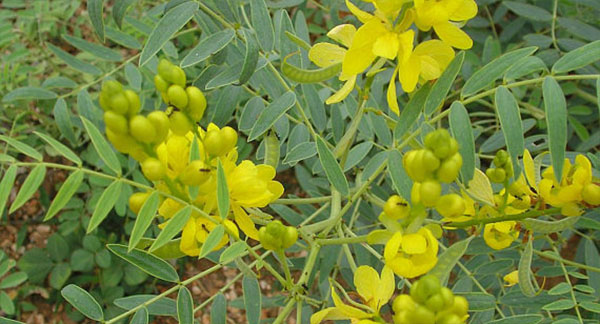USES
Senna is an FDA-approved nonprescription laxative. It is used to treat constipation and also to clear the bowel before diagnostic tests such as colonoscopy. Senna is also used for irritable bowel syndrome (IBS), hemorrhoids, and weight loss.
CULTIVATION
The crop can thrive on a variety of soils, but is largely grown on red loams, on alluvial loams. The texture of the soil which account for the major hectare under Senna crop varies from sandy loam to loam, while the black cotton soils are heavier and more fertile. The average pH ranges from 7 to 8.5. It is very sensitive to water logging. Hence, grown only on well-drained soils. Senna is a warmth loving crop and requires bright sunshine for its successful growth.
SPECIES
Senna could be economically grown under rainfed conditions. In most years, the crop needs no irrigations except under the conditions of prolonged drought. However, when it is grown as a semi-irrigated crop, the yield increased considerably. About 5-8 light irrigations are enough to raise a good crop of Senna, however, heavy irrigations are injurious to the crop.
MARKETING
Market for medicinal plants is volatile and the economics may vary. there is a huge demand for traditional Senna plants. Our company also provides the facility of Buy Back agreement.
HARVESTING
Senna plant produces foliage containing higher sennosides between 5-90 days age, depending upon the total plant growth. The picking of leaves is done by hand so that most of the growing tops are removed at harvest this also induces the plants to produce more of branching which otherwise reduce foliage growth considerably. A second picking is taken at 90-100 days and the third picking between 130-150 days when the entire plants are removed so that the harvested material includes both leaves and pods together.
